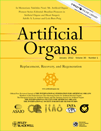Stability of Therapeutic Albumin Solutions Used for Molecular Adsorbent Recirculating System-Based Liver Dialysis
Abstract
Mounting evidence suggests beneficial effects of albumin dialysis-based liver support in patients suffering from acute-on-chronic liver failure. Molecular adsorbent recirculating system (MARS) is a nonbiological liver support device, based on the exchange of albumin-bound toxins between the patient's blood and a 20% human serum albumin solution in a secondary circuit. Bound toxins are continuously removed from the circulating albumin by exposure to activated charcoal and an ion-exchange resin. The aim of the present in vitro study was to determine the impact of exposure to charcoal and resin on the ligand binding properties of albumins, containing various levels of stabilizers and obtained from different suppliers (Baxter, CAF-DCF [Red Cross], and Sigma-Aldrich). Albumin binding properties were assessed by measuring equilibrium binding properties of warfarin, diazepam, and salicylate before and after incubation (for up to 7 h) with adsorbing materials; albumin-associated esterase-like activities were also determined. Notable changes in albumin binding upon incubation with adsorbing materials were only observed when using warfarin as a ligand. Affinity of warfarin for the Baxter and Sigma albumins showed a pronounced decrease (higher Kd) after the 1–7-h exposure to charcoal or resin. In the absence of adsorbing materials, similar effects were found, indicating that incubation time per se affects albumin binding properties. Following exposure to resin, Baxter albumin binding capacity (Bmax) increased about twofold. For albumin obtained from CAF-DCF, binding affinity and capacity for warfarin were constant under all conditions tested. Esterase-like activities associated with these albumins were either maintained or enhanced (up to 2.5-fold in case of Sigma albumin) following 7-h incubations with adsorbing materials. Our data suggest limited direct influence of the presence of stabilizers in therapeutic albumin solutions on baseline binding properties of human albumin. However, in vitro incubations of these albumins for several hours resulted in supplier-specific changes in warfarin binding, suggesting an influence of stabilizers on the stability of binding properties. Further preclinical and clinical studies are required to elucidate the clinical relevance of these in vitro results, that is, to what extent these changes in albumin binding properties result in altered performance of albumins in the secondary circuit during the MARS procedure.




